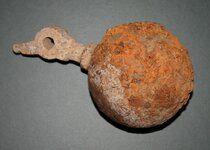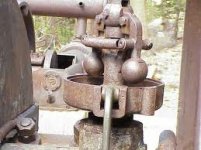fishwhacker
Jr. Member
- Oct 21, 2011
- 51
- 18
- Primary Interest:
- Other
This item was recently discovered along a riverbank following the east coast hurricane. The ball itself is aprox 5 inches in diameter and including the protruding bolt is 9 inches long or so. Weighs a good 15 pounds. What the heck is it?
Should I be worry about it blowing up?
Thanks
Should I be worry about it blowing up?
Thanks






